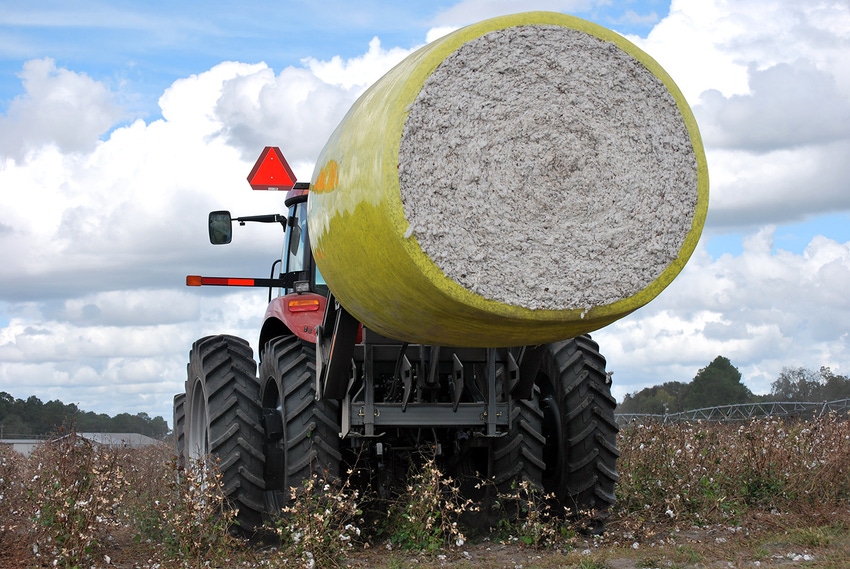
Adverse weather hurt some locations, but in many others, cotton growers anticipate gin-clogging yields. There's a lot of pretty cotton out there but getting it from the field to the gin without plastic contamination remains a challenge to the industry.
A new Cotton Incorporated document based on an interesting study provides growers, module handlers and ginners recommendations on handling round modules to eliminate plastic contamination.
“With global cotton stocks building due to the impact of COVID on textile demand, we need to continue to give textile mills many reasons to prefer U.S. cotton. One of the reasons has been our low contamination levels, so keeping plastic out of our cotton bales is more important now than ever,” says Ed Barnes, senior director of agricultural and environmental research at Cotton Incorporated, in a late-August statement.
Barnes, John Wanjura and Mathew Pelletier with USDA, Jason Ward with North Carolina State University, and Bobby Hardin with Texas A&M University in August published "Prevention of Plastic Contamination when Handling Cotton Modules."
The recommendations they gave were based on looking at video footage collected from cameras placed on module handlers in fields and gin yards, as well as video cameras at the module feeder at four locations in North Carolina and Texas, which included diverse production practices using pickers and strippers and environmental conditions from humid to arid.
Module feeders at the gins in some cases led to plastic contamination, but many contamination events, as they refer to them in the study, were traced to modules damaged in the field or during transport due to handlers:
Not fully raising the module above cotton stalks or placing modules on top of cotton stalks.
Hitting the bottom of flatbed trailers during loading and unloading, which can damage the modules' bottoms. Chains on module trucks also caused damage.
Placing modules on flat bed trailers or when loading oversized modules into module trucks damaged the modules' sides.
According to Cotton Incorporated, over the last three years, USDA Classing Offices have found plastic in samples, and the premium for U.S. cotton has eroded. Placing a four-cent per pound decrease in the premium due to plastic contamination alone on a 20-million-bale crop brings a loss of $384 million annually to U.S. growers
The U.S. cotton industry for decades has seen the benefits of a good global reputation, but from troubled trade to tough regulatory decisions, a lot of things are out of its hands to control. But rallying to address the contamination issue is one within grasp of experienced, professional hands, the best in the world.
According to USDA, as of Aug. 1 U.S. yields are expected to average a record 938 pounds per harvested acre, up 115 pounds from 2019.
About the Author(s)
You May Also Like






